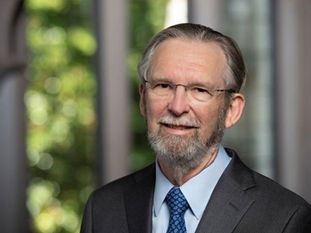Exploring Medical Ethics in Healthcare

In an effort to make sure that the most important information gets covered in these blogs, I will be jumping straight to day five since Hurricane Katrina hit. As implied by the title of the book, Five Days at Memorial, this fifth day was the culmination of the events that took place in the text. At this point, many of the patients and refugees at the hospital had been evacuated, either by boat off of the ER ramp, or through the helipad on the roof (it hadn't been operational in years, the maintenance team had to diligently

work to make sure that helicopters could safely land). A large handful of the staff had evacuated because of their own medical issues, another portion had evacuated with patients that needed medical care nonstop. A triaging system had been put in place, but it was unusual compared to the traditional system. Instead of the worst off patients evacuating first, they were designated for the last evacuations, in an effort to give others a better fighting shot. At this point, an overwhelming majority of the patients left were the LifeCare patients that had been transferred there the day before the storm.
The patients that were left were completely bedbound. They were unable to move at all by themselves, and the journey to the helipad that consisted of going up and down multiple stairwells, trekking up through the parking garage, and squeezing through a hole that was left from the storm and floodwaters, was something that none of these patients would be able to do. Many of the medical professionals did not believe that they would survive this journey, even if they were carried the whole way by nurses, doctors, and volunteers. Susan Mulderick believed that at this point, these patients would not be able to make it out of Memorial alive. One of the doctors glanced at the elderly patients, skinny from malnourishment, close to naked to keep them cool in the hot New Orleans humidity, confused, and in pain. She was anxious and fearful, and remembered back to a few days prior when staff had euthanized their pets brought to the hospital. “Why, she wondered, should we treat the dogs better than we treat the people?” (Fink, 193). She believed that keeping them alive in the condition that they were in was awful, criminal, and even began to justify here reasoning with the cyanide pills given to soldiers at war to avoid torture. At this point, the decision was made to medicate the patients with a cocktail of morphine and versed, with the intention of comfortably euthanizing the patients. (Read more about the drug interactions here: https://pubmed.ncbi.nlm.nih.gov/2919767/).

Mulderick believed the next step of the plan was to evacuate anyone who would have an issue with this decision, mainly the nurses of LifeCare that had been working with some of these patients for a significant amount of time. Nurse Gina Isabell was told that “Baptist was evacuating its employees, and anyone who could walk needed to go” (Fink, 201). The nurses were apprehensive about leaving their patients, but were told repeatedly that the plan was not to leave any living patients behind. Technically, this plan was not a lie. Many of the staff believed that the patients were just being put into a more comfortable state, not being put to death. The main doctors that were carrying out this process were Dr. Thiele and Dr. Pou, and they were being assisted by an ICU nurse Karen Wynn. Wynn had no qualms with what they were doing. She thought, “So what if they are euthanizing? . . . Wynn lived in the world of the ICU, where many patients didn’t get better. Death was often scheduled, orchestrated, the result of decisions to switch off machines,” (Fink, 214). She believed wholeheartedly that the patients were suffering, and they would not survive this process. She helped set up the IVs, and they waited until the last somewhat healthy patient left the hospital alive.
While I am not going to get into the ethics of this quite yet, I think it is incredibly important to note that these medical professionals were not in a good state of mind. They were so exhausted from the heat. They had numerous patients they were responsible for. Many of them had not heard from their families in days, and were worried if they had survived the flooding. Dr. Pou recounted that she had gotten less than one hour of sleep each night since the storm, and this was the fifth day straight of this incredible sleep deprivation. They were fearful for their own health, and for their safety. New Orleans was taken over by violence, and each night they were terrified that criminals would break into the hospital. Whether or not this was the ethically correct decision, they believed that they were doing the best thing for their patients, and it is impossible to imagine how your decision making skills would be impacted in this situation.
Pictures courtesy of:
https://www.latimes.com/nation/la-na-katrina-chaos-hospital-20060723-story.html
https://www.recoveryohio.org/benzos/midazolam/




